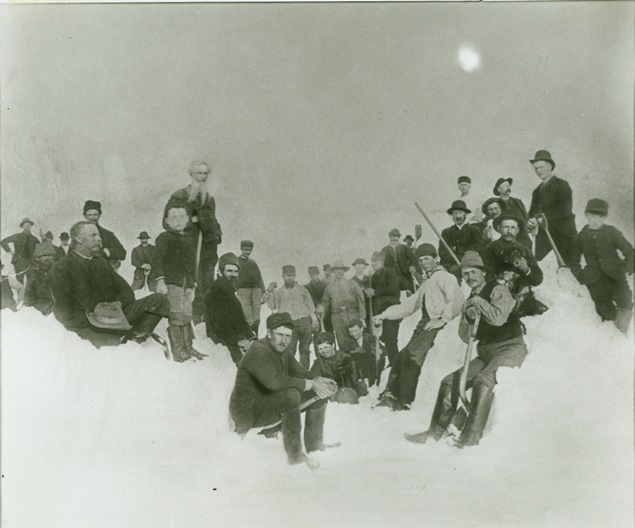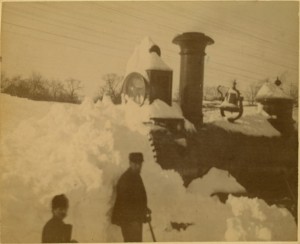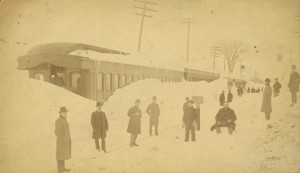By Karen Frederick and Anne Young
In the early days of Greenwich, volunteers were the town’s first responders. An 1873 newspaper reported that when the church bell rang, “Citizens and strangers by the score and the hundred answered the call.” Throughout its history, the Town of Greenwich has seen many emergencies and disasters. Each experience caused the town to reexamine its needs and respond. From this has evolved today’s first responders—police, fire, and emergency medical service (GEMS).
March 11, 1888
A storm of wind and rain began on Sunday night, March 11, 1888. The temperature dropped rapidly. Before daylight Monday, a blizzard was in full progress. By that evening the drifting snow had stopped the trains and all streets were impassable. Nearly all electric, telegraph, and telephone wires were down. When the storm ended, Greenwich received more than 50 inches of snow with drifts of 20 to 30 feet. By hand, shovel, and yokes of oxen, people began to dig out.
The citizens knew they had to work together and help each other. Tuesday morning businessmen, “en masse” according to The Greenwich Graphic, were out with shovels clearing paths in front of the stores, at the crossings, and to the railroad. Neighbors shoveled out neighbors. Reporters from the Graphic made every effort to secure telegraphic communication with New York and to survey the town and relay their findings to Greenwich citizens.
The Borough Committee on roads made the streets passable as soon as possible. On Wednesday afternoon, 50 men and five yokes of oxen began pulling plows and huge sleds—and continued for the next two days. Precautions were taken against fire by shoveling snow away from the hydrants and removing the fire hose from the hose carts so they could be carried by hand.
Local Heroes
For three days the town had no communication with the outside. The first sleigh that came into the village on Wednesday was carrying milk from Dayton’s farm in Greenwich. Villagers were supplied until the stock ran out. When asked the price, Mr. Dayton responded, “Only six cents, the usual price. I do not believe in taking advantage of people’s necessities.” At the same time, The Sun, which normally sold for 3 cents, was sold to a Graphic representative for $10—the first news Greenwich had from outside. For the citizens of Greenwich, the heroes were ordinary people. Mr. Dayton, who did not attempt to increase the price of milk; and August Brush, who walked to Norwalk on Thursday, secured several quarters of beef, and had them delivered to Greenwich on the first train that came through Friday morning.

Residence of J. H. F. Cook, Esq., Field Point, Greenwich, March 14, 1888 – Greenwich Historical Society
Karen Frederick, Curator and Exhibitions Coordinator, and Anne Young, former Curator of Library and Archives, of the Greenwich Historical Society contributed this article and co-curated the exhibition Everyday Heroes: Greenwich First Responders (September 14 through August 26, 2012) from which it is derived.











